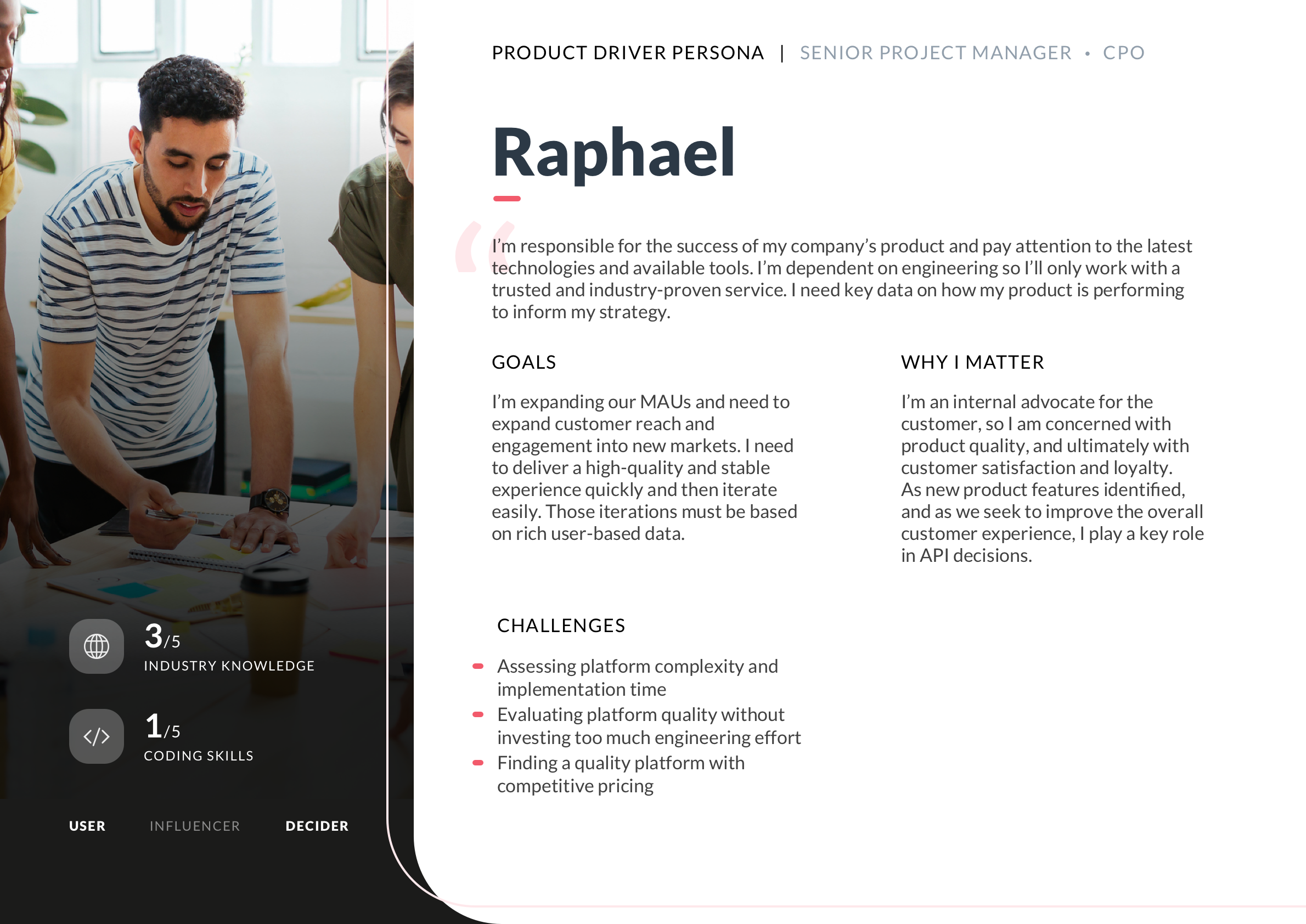Case Study — 2018-9
Personas and Customer Journey
User ResearchTL:DRVonage is a platform that simplifies dealing with multiple global phone providers and web standards into a set of plug-and-play APIs for SMS, Voice, Video and others.
When I joined, its users and their journeys were either not mapped, or just partially known. The picture was being drawn from slow dripping feedback that came from people who talked to customers directly - PMs, support engineers, developer relations devs or account managers.
On this project, I’ve worked alongside a research agency to validate our user personas, and kick-started a customer journey by consolidating internal expert’s knowledge. It was later validated by our newcomer senior UX researcher. These new artefacts are now used to drive product design initiatives and product strategy plans.
↓
MY ROLEConsultant and Researcher — user interviews, internal experts interviews, stakeholder management
STAKEHOLDERSSenior UX Researcher
Design Lead
— 2018
Personas
Our design lead did a discovery initiative to gather internal expert’s views of our customers and had a research agency to validate the assumptions. I came in to help with overseeing their work, conduct stakeholder meetings, and pass on their agreed points of view.
🗝 Learnings
We had way fewer personas than what we started with. Most changes came up from company size: smaller and underfunded teams wore many hats, big teams had specialized functions.
Buyers did not interact with the product directly, at least not big companies - on small companies they had other more meaningful interactions.
Some small use cases were not personas, but still a relevant product user. Finance employees need simple invoices, support engineers need logs and analytics access. Neither logged frequently, but both were very vocal in other parts of the business.



— 2019
Customer Journey
While working on parallel projects, I identified that it was hard to plan or prioritize new initiatives without having a holistic view of how were customer using our products.
I kick-started some conversations with team leads and heads of department that had equal concerns and merged their knowledge into an artefact. Later on, our UX Researcher contacted an agency to validate these findings.
🗝 Learnings
Internal experts have a good-enough perspective. Nothing is as good as interviewing customers directly, but when in a pinch, talking to people that dealt with customers themselves is a great shortcut.
Service’s maintenance was a real pain. Different teams owned and took strict care of onboarding, but without a holistic view, customers were suffering by themselves in the middle. Key pain points were understanding errors, making sense of our bad content placement, and generating meaningful logs and analytics.
Customers don’t speak in jargon. The words that I’ve chosen initially to represent phases were not the same words customers used to describe their experience. That finding came from user interviews.


